Don't wanna be here? Send us removal request.
Text
The Affects of Covid-19 (Coronavirus)
I remember the first time I heard of coronavirus (Covid-19) it was early February, I read an article about a virus that was transferable from person to person in China. As soon as I read that article, I did some research on how it affected people. I learned that the virus was a contagious respiratory illness that affected people with weak immune systems and older aged people. At first, the statistics showed that older people were more at risk to die than others, but the more I watched the news and obtaining more information, I found that anyone can be affected by it and can cause major health issues. The virus was discovered in Wuhan, China where the citizens were greatly affected. China went into a complete shut down and quarantined everyone. Whoever was found wondering the streets were forced to go back to their homes and quarantine. Public places, the food market, transportation services and stores were shut down and closed to prevent the spread of the virus. At first China was at the top of the list of most affected by Covid-19, but now US is leading at the top number one spot for countries being affected the most. Right behind the US are Italy, Spain, Germany, China, France, Iran, United Kingdom, Switzerland, and Turkey.
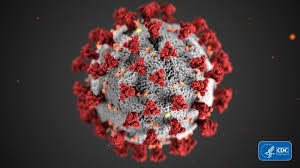
Its crazy to think about how fast a virus can spread around and how countries are affected by it. At first my thoughts were, “I’m not worried about it, it won’t reach the U.S.”. Then I was on Instagram one day and was reading through comments on a post about Covid-19. Someone commented on it and joked about it saying how people are overreacting and that it won’t affect the U.S. Then someone replied back to the comment that was from Italy saying that this wasn’t a joke and that everything was closed down in Italy and that the same thing will happen in the US. After reading those comments I didn’t really think much of it, but then a month later everything was closing down, people were asked to stay quarantined and were told to stay 6 feet away from people to prevent spreading the virus. And just like that, it was the beginning of a world-wide pandemic that affected everyone and soon change the world as we know it.
How are living situations and daily lives affected? What kind of changes will people have to make? Will everything be the same after? Are we going to be able to live how we used to, or will we have to live a new lifestyle that we’re not entirely used to? How will people react to the changes?
These are the types of questions that run through my mind when I think about what the future will be like.
This past month the challenges that the pandemic has created for cities and urban residents are unemployment, socialization, and lack of resources. These issues are the main problems for cities and urban residents because the people are the ones who are most affected by this change. The reason why cities thrive so much is because of the people that live in it, the livelihood of people and their ideas and contribution to society. Humans make things possible, but with how the virus is affecting people, it has slowed down the growth for cities. Unemployment makes a huge impact in our society, causing people lose their jobs which means no income, and with no income paying for bills becomes difficult. Socializing has become a major issue in cities and urban residents because not everyone listens to what the government says. There will always be people that ignore the government and do what they want. The problem is with that is those people who continue to socialize in groups has a higher risk of spreading the virus to someone else. Even if it doesn’t affect them, they can affect other people and causing the virus to spread; making it difficult to slow down the virus from progressing. Finally, the lack of medical resources for the sick people have been a major problem around the world. This is an important problem that cities around the world are having, especially in high populated cities have come across or will come across. Because of the high rate of people testing positive for the virus, many hospitals are running out of medical resources to help and prevent the virus from spreading. Hospitals are running low on test kits, hospital beds, medicine, etc. Without the medical resources to help fight against covid-19, the more people are affected which makes it difficult for us to fight back against the virus.
When businesses began shutting down to prevent the spread of covid-19, people started to get laid off work and losing their jobs. Some of my friends were recently laid off work because of the virus. It sucks because there is nothing we can do about but wait for the spread to come to a halt and stop. This is a huge problem because people need income to pay for bills, food, miscellaneous things, etc. According to The Washington Post the U.S. now has more 22 million Americans who have filed for unemployment. The United States has not seen this level of job loss since the great depression, and the government is struggling to respond fast enough to the deadly coronavirus health crisis and the widespread economic pain it has triggered (Long). This not only affects the U.S. citizens, but it’ll make a huge impact on the economy. To understand covid-19’s hit on the economy, consider its effect on different industries. Consumption makes up 70% of America’s gross domestic product, but consumption has slumped as businesses close and as households hold off on major purchases as they worry about their finances and their jobs (Miller). Ever since businesses started to shut down, people started to lose their jobs and worry about their finances because no one knows how long this pandemic will last and how it will affect us in the long run. People are becoming more careful with what they buy and are only buying essentials to survive and prevent the virus from spreading.
Once quarantine is over with, I think society will change for the better.
Three ways that I think cities may change as the result of the pandemic is:
1. More businesses might have people work from home more often now. Because of how people were forced to work from home, businesses notice how people are still able to work efficiently at their homes. Which means, not all jobs will require to work in a workplace. Businesses and companies will start using online software that allows the workers to use and share their work with each other. One of the many lessons businesses are going to take out of the Covid-19/coronavirus event is the value of remote work. Though working from home requires some discipline and a steady routine, the increased work-life balance that comes with flexibility, coupled with the reduction in stress, help to increase productivity for remote employees (Boss Magazine). In other words, there are benefits from working from home. Working from home will allow people to be comfortable in their own workplace, reduce stress by feeling safe and comfortable. Because of smart cities technology, cities are able to adapt and take advantage of what is provided. For example, Zoom has helped businesses and people to communicate with one another during quarantine. Zoom allows people to stay connected in a workplace or in a social standpoint. Because of this technology, people are able to continue adapt and change their ways in doing things. Other companies or businesses can have their own private software where everyone in that company can stay connected and work together. The only difference is that instead of having to get ready and go into work, you can be at home working in a more comfortable setting.
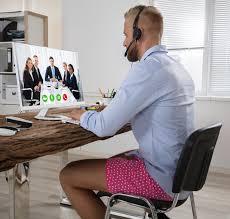
2. Different transportation infrastructure.
Because of Covid-19, people are becoming more aware of how fast a virus can spread in a crowded or high populated area. In addition, ever since quarantine began, nature itself has improved because of the decrease in the use of car emissions and human activity. Transportation infrastructure is the circulatory system and lifeblood of the economy. Airports not only connect cities and enable the flow of goods across the world; they are key drivers of urban economies (Florida). In other words, transportation is one of the most important aspects in a city, it is how people and goods get around and stay connected. In the article We’ll Need to Reopen our Cities. But Not Without Making Changes First the publisher talks about how cities should begin initiating ways to reduce crowding in certain areas. I think cities will begin encouraging people to bike or walk more rather than using a car or bus to reduce the use of car emissions. In addition, ever since the outbreak, I believe that people will be more aware of their surroundings and be cleaner and safer. So, with that being said, I can see buses and building adding more hand sanitizing machines for the public to use.
3. I think people will change their lifestyle after quarantine for the better
While being stuck in quarantine, I noticed how important exercise and eating heathy impacts a person life significantly. I became depressed by not being able to do anything and not staying active. I’m sure I’m not the only person who noticed that during quarantine. Walking outside for 10 minutes everyday and absorbing the sunlight, helped a lot with my stress and anxiety. Staying active allows people to keep their minds healthy and strong. A smart city technology that could be implanted to help could be similar to apple watch or FitBit and how it keeps track of people’s activity through out the day. Or adding more walkways for people to appreciate the nature while walking outside. I think more people will be active outside and enjoying nature more than they used to. Adding more walkways will also encourage people to walk more and to keep exercising.
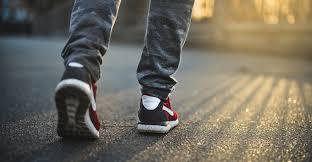
Hopefully Covid-19 will die out soon so our economy will be able to recover from the effects of the virus. People in U.S. reacted slowly/poorly to the situation and were caught off guard by it. Now that we’ve experienced something drastic, the government should start planning for the future. No one was ready this or knew how to react to this outbreak. Hopefully this never happens again, but if so, we will know how to react and be ready for it.
Shenker, J. (2020, March 26). Cities after coronavirus: how Covid-19 could radically alter urban life. Retrieved from https://www.theguardian.com/world/2020/mar/26/life-after-coronavirus-pandemic-change-world
CityLab, & University of Toronto’s School of Cities and Rotman School of Management. (2020, April 13). We'll Need To Reopen Our Cities. But Not Without Making Changes First. Retrieved from https://www.citylab.com/equity/2020/03/coronavirus-cities-adapt-future-plan-economy-infrastructure/608908/
Landon, E. (2020, April 14). COVID-19: What we know so far about the 2019 novel coronavirus. Retrieved from https://www.uchicagomedicine.org/forefront/prevention-and-screening-articles/wuhan-coronavirus
Duddu, P., & Praveen. (2020, April 2). COVID-19 coronavirus: Top ten most-affected countries. Retrieved from https://www.pharmaceutical-technology.com/features/covid-19-coronavirus-top-ten-most-affected-countries/
The Effect of COVID-19 on the U.S. Economy. (n.d.). Retrieved from https://www.fpri.org/article/2020/03/the-effect-of-covid-19-on-the-u-s-economy/
Long, H. (2020, April 16). U.S. now has 22 million unemployed, wiping out a decade of job gains. Retrieved from https://www.washingtonpost.com/business/2020/04/16/unemployment-claims-coronavirus/
Team, E. (2020, March 19). Remote work will be new normal for many. Retrieved from https://thebossmagazine.com/remote-work-covid-19/
0 notes
Text
Bicycle Pedestrian Safety Commision
The Bicycle Pedestrian Safety Commission in Bloomington is a group of citizens who are in charge of:
· Develop safety programs.
· Serving as citizen’s forum concerning safe access for pedestrians, bicyclists, and runners.
· Encouraging the hosting of walking, bicycling, and running events in a safe manner.
· Reporting and recommending to the Mayor, Council, and Public Works regarding pedestrian, bicyclist, and runner issues.
(City of Bloomington, Indiana)
In other words, the BPSC (Bicycle Pedestrian Safety Commission) is a group of citizens in Bloomington who plan on making Bloomington a safer and more environmentally friendly city. This group contains the mayor, common council, and other citizens who wish to improve the living and safety awareness.
I think this group of people are important because they are the ones who plan and try to execute ideas to help better transportation methods and safety for pedestrians walking. Whether its about pedestrians walking, biking, cars, sidewalks, etc. The BPSC covers all the topics concerning people’s safety which is very important for a city.
Each member of group talked and shared their ideas and concerns with the rest of members to find solutions to the problems occurring in Bloomington.
Reason for this meeting?
The reason for having weekly meetings is to share solutions and problems with one another. Anyone is welcome to attend the meeting and add comments of their own. The meeting was held in a conference room in the City Hall at 5:30-7:00 on N. Morton Street, Bloomington, IN 47404. In this meeting anyone was allowed to speak their mind and talk about the daily problems in the city, areas where it very congested, safety issues concerning both drivers and walking pedestrians. I think it’s a great idea to have weekly meetings to discuss the issues arising in Bloomington. The group focuses on the current issues happening and trying to prevent future issues by implementing different methods and technology. With that being said, the BPSC main goal is to better the safety and transportation methods in Bloomington Indiana.
Who attended the meeting?
There was a total of nineteen people who attended the meeting. The meeting was in Hooker conference room which had around twenty-five seats and one large table in the middle. Of those nineteen people who attended, nine of them were part of the BPSC and two were civilians. The other eight who attended were other students. Every person was asked to sign in on a sheet of paper, then we introduced ourselves to each other.
I forgot most of their names, but I was able to figure out that the meeting consisted of members of the BPSC, two city staff members (Neil Kopper and Mallory Rickbeil), one newly moved civilian, and a bicycle club member. Every one of them had issues they wanted to discuss, and some had ideas to solve the issues. We were then given an agenda that listed all the topics that would be discussed during the meeting and in addition they used a projector to show Bloomington in google maps. This gave us visuals and made the conversation more effective. In addition, one member used the white board to draw and explain his concerns to make it easier for people to understand.
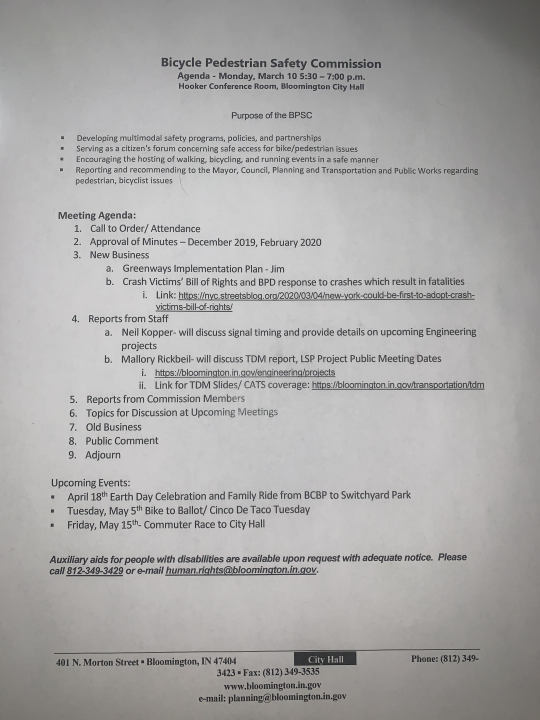
Topics that were discussed:
Crash business and fatalities in Bloomington.
A pedestrian was killed in an accident recently.
Light signal crossing
Bloomington Laws
Crossing roads
Traffic caused by one-ways and busy streets.
Bike lanes and sidewalks
There were multiple topics that were covered during the meeting. According to one of the members, there are around 4,000 car accidents a year in Bloomington. The first issue that was brought up was about a crash victim who was killed in an accident while crossing the street. The concerns one person had was why the driver didn’t get charged for homicide during at the scene and in addition asked how the city could prevent that from happening again. It’s a very difficult question to answer because an accident is called an accident for a reason. Accidents are unpredictable which makes it very difficult to prevent. One person suggested that when an accident results in a death and to create a memorial where the death occurred to bring public awareness about safety.
Another topic that was a main concern which is also related to the accident are the traffic lights around Bloomington that signals cars and pedestrians to cross. In addition, she talked about how the traffic light signals were inconsistent around town. She noticed that some traffic light signals lag in time in certain areas compared to other areas in Bloomington. She explains how south on Jordan and Atwater the countdown can be at zero and you can still cross before the light changes. Some people take advantage of that delay and cross causing road problems. But in other places the light turns to green immediately at zero. Everyone agreed that that was a major issue in Bloomington, especially in the populated areas. Neil Kopper (City Staff) was one of two people who lead the discussions during the meeting. He brought up an issue that is related to the other problems which is how stop lights and pedestrian light signs are not consistent with one another. He explains how pedestrian stop lights are very slow and delayed compared to traffic lights. He then talks about the normal speed of a pedestrian walking and compared it to the light signal. Neil also notices in some areas that the light is not giving pedestrians enough time to cross.
One person noticed that in some parts of town, if the count-down clock says three seconds, there is actually an extra three seconds.
One person asked, if it is reasonable to let pedestrians press a button to allow them to cross? Neil responds by saying ideally “this” (allowing buttons to signal lights) would be best used for pedestrians and cars, but its not. He explains how the signal controls equipment is old and outdated, which can cause issues. There are some areas in town that do have buttons for pedestrians to press for crossing. Neil thinks that they should be automatic instead of manually pressing the button. After discussing the issues around Bloomington, the city staff members began talking about current and future projects to solve the issues.
Projects
A few projects that were discussed during the meeting included replacing all the sidewalks and multi-use paths, replacing excess space on the road and installing bike protected lanes (This will be the first protected bike lane in Bloomington), adjusting geometric turns to decrease speed forcing drivers to yield, replacing guard rails, and implementing raised crosswalks. By doing so, it will enforce safety and protect pedestrians and bicyclist from cars. In addition, Neil talks about problems with “school zones” and how people tend to ignore it and drive fast. To reduce the amount of people speeding he wants to add bleaker lights that signals drivers when to drive fast or slow through school zones.
Another project that is coming up is called Kirkwood Maintenance Project where all of Kirkwood and Walnut to Indiana, is getting resurfaced. They plan on installing sleeves or moveable bollards to block roads for festivals and special events.
Smart City Technology Implementation
During the meeting I noticed that these problems were related to the stuff we talk about in our Smart City class. They mentioned adding a protected bike lane and I think is a great I idea. Bike protected lanes will ensure the safety for bicyclists and reduce road space. By doing so, less accidents will occur, and people and cars will be able to move smoothly without running into problems. This will also reduce the amount of people driving on road making it less dangerous for people. A similar project was done in New York and seems to be working well.
I remember during the meeting someone talked about the buses and how they cause problems on the road. She complained about how if you’re driving behind a bus, you’re not able to see what’s in front of you. The roads are too small for buses to move freely and turn smoothly without causing traffic issues. I think installing an only bus lane would help a lot. Adding an only bus lane will prevent traffic and allow cars to move more smoothly through the streets. Some bus stops are in the way of cars and bike lanes causing traffic congestion.
This was my first time going to a city hall meeting concerning city issues. To be honest at first, I thought it would be boring, but I actually enjoyed it and the people were nice and open-minded. I was able to experience first-hand on listening to the people’s concerns and trying to figure out solutions to fix those problems. Because of Smart Cities class, I was able to understand the content and diction they were using.
At the end of the meeting Neil asked if anyone had additional questions or concerns and if anyone had ideas of what would best improve pedestrian and bicycle safety. The meeting ended after Neil discussed the topics for the next meeting.
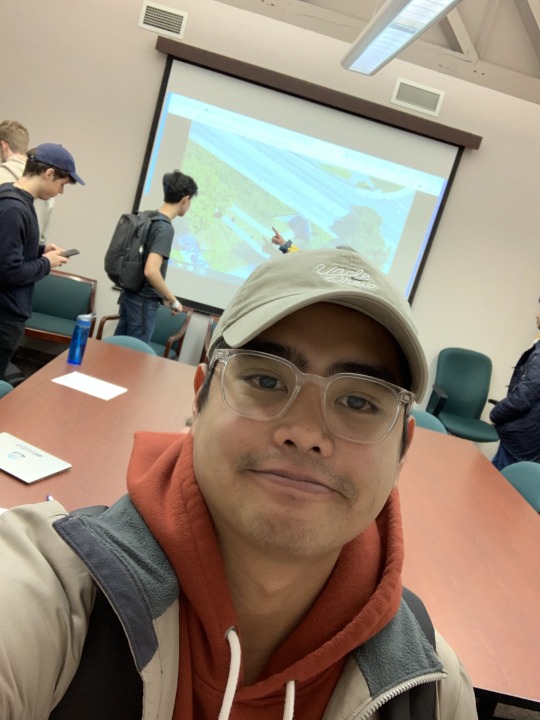
Works Cited
“City of Bloomington, Indiana.” Bicycle & Pedestrian Safety Commission | City of Bloomington, Indiana, bloomington.in.gov/boards/bicycle-pedestrian-safety.
0 notes
Text
Problems and Solutions to Traffic Congestion
What is a smart City?
A smart city consists of a combination of technology and resources used to the fullest to enhance and better the city and lives of the citizens. Smart cities focus on using the technology available to improve city infrastructure, transportation systems, water system, energy, pollution, environment, and the community. I believe this is a good definition of what a “smart city” is because the whole point of a smart city is to maximize the use of resources and technologies to create a better sustainable life. Not only does a smart city take care of its people, it also takes care and maintains the environment.
Traffic Congestion
The topic I researched was over transportation congestion and traffic in smart cities. I found this topic very interesting because I am a person that hates traffic. Traffic congestion in cities and in urban areas have always been a problem and it is the same problem around the world. The Google definition of traffic is vehicles moving on a road or public highway (Google). There are many factors that can cause traffic and congestion such as over population, car accidents, rush hour, people crossing the road where they are not supposed to, poor street/road infrastructure, etc. In addition, weather is a major factor when on the road because it can make driving difficult depending on the weather. For example, heavy rain and fog can bother the driver’s sight making it harder to see and drive. Another example would be snow or ice which can causes the roads to be slippery making driving more prone to accidents. Smart cities plan to use the resources and technology that is available to improve transportation systems and to prevent or decrease traffic congestion in a safe and eco-friendly way. The goal is to use technology to better the city and the lives living in it.
Beijing’s Restrictions on Licence Plates
Can you imagine having a car that you bought for yourself and not being able to drive it whenever and wherever you want? What would be the point of having a car right? The citizens in Beijing can imagine it because that is what is happening there as we speak. There’s this article that talks about the issues of traffic congestion on Beijing because of the over population. These issues are common around the world and people are always looking for a new solution. The problem with traffic congestion is that it can happen anywhere around the world, and to say the sad truth, traffic congestion will always be an issue on this planet. Whether its in an urban area or a city, there will always be some sort of traffic that no one can really do about. For example, the weather is an unpredictable factor that can cause problems when driving on the road. Bad weather can cause drivers to drive slowly and make hesitation decisions that can cause an accident. In addition, bad weather can not only affect the driver, but can affect the roads as well. For instance, a thunderstorm striking down a tree and causing a blockade on the road, which can lead to traffic congestion. With that being said, there are many different factors that causes traffic congestion. One main factor in Beijing that causes traffic congestion is overpopulation.
Overpopulation is becoming more of an issue in huge/popular cities because of the use of cars and transportation methods. The city of Beijing has a population of about 21 million, now has 5.6 million cars, more than double what it had 10 years ago (Guo). With that being said, with so many cars and people trying to get where they have to go, causes problems with traffic congestion on the roads and sidewalks. Faced with the problems brought on by the growing number of cars, city officials decided to take action (Guo). To improve traffic congestion in Beijing, the Government decided to limit the amount of license plates given to the citizens to reduce the car usage substantially. By doing so, Beijing hopes to reduce the amount of traffic congestion on the streets.
Beijing’s transportation authorities said they would keep the number of cars under 6.3 million by the end of 2020 by further tightening the annual quota for license plates (Guo). The city of Beijing plans on reducing the amount of license plates this year to 90,000, which is lower than last years 120,000 license plates. In addition to limiting the license plates, government officials offer a police-issued permit which has to be renewed every week. This method allows people to drive without having a license plate themselves, but there’s a catch to it. This type of permit allows people to only drive at night. To be more specific, authorities have banned driving in the morning, during rush hour, and between 6 a.m. to 10 p.m. on certain major roads. If someone gets caught driving a car in Beijing without a permit or license plate, he or she is fined with a 200 renminbi ($30 in the United States) and receive penalty points. To get a registered license plate in Beijing, people have to apply and put their name in a system. This system then randomly selects a winner to receive a license plate. This method is very similar to winning the lottery, which means there is a small chance winning.

With all that being said, Beijing’s method for reducing traffic congestion shows improvements not only in the decrease of traffic congestion, but also in the decrease of air pollution by limiting car usage. I don’t think this method is perfect even though the results of traffic congestion have improved. For a city to be successful, the people living in the city must be happy and thriving. I think this method limits the people’s freedom which is not fair. I believe that if you have a car you should be able to go anywhere you want, whenever you want.
If I wasn’t able to drive my car whenever and wherever I want that would make me upset honestly. Yes, I get that over population can cause problems in traffic congestion and issues with transportation. But, not being able to drive your own car is honestly not fair. What’s the point of owning a car if you weren’t able to use it? In addition, people would still have to pay for car insurance which would be a waste of money if you barely get to drive your car. Even though this solution is reducing the amount of traffic congestion, it is making the lives in Beijing difficult. Some issues that derived from limiting license plates is that people began renting/selling their license plates to other people. The problems that can arise from this situation can cause major issues concerning fraud and safety issues. To be more specific, if you had someone rent your license plate and they get in car accident, “you” the owner of the license plate would have to take the blame and pay the consequences. Vice versa, if you rented a license plate off someone, that license plate could have been marked with penalties, and you could get in trouble for it. In addition, the government is limiting the amount of freedom the citizens can get which is unfair. Everyone should have the right to their freedom and shouldn’t have limits (unless it’s illegal obviously). I feel that limiting the amount of license plates each year can cause more problems than it is helping. Because there are people in this world that if they don’t get what they want, they will find a way to get it legally or illegally. In other words, there might be a chance of higher crime rates. In addition, decreasing the amount of people who get to drive doesn’t stop the over population that is happening. Congestion doesn’t only refer to transportation, but it also refers to the congestion of walking pedestrians on the streets.
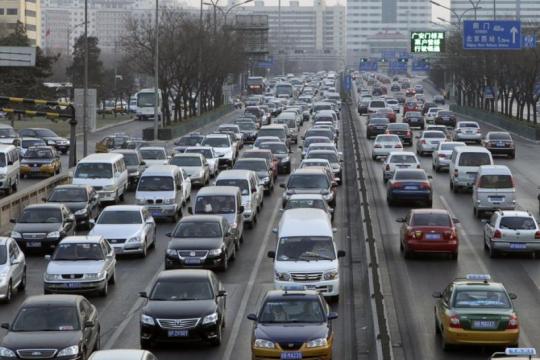
Work cited:
Guo, Owen. “Want to Drive in Beijing? Good Luck in the License Plate Lottery.” The New York Times, The New York Times, 28 July 2016, www.nytimes.com/2016/07/29/world/asia/china-beijing-traffic-pollution.html.
Global Times. “Beijing's Car Plate Policies.” Global Times, www.globaltimes.cn/content/1098345.shtml.
Almaty, Kazakhstan: Solution to Traffic Congestion
Traffic congestion has always been a problem throughout time, and it sucks to be frank. No one likes being stuck in traffic especially when you have to get somewhere in a limited amount of time. There are many issues that causes traffic congestion in cities and urban area. Obviously the more populated areas suffer the most when it comes to traffic congestion. Why does traffic congestion occur in more populated places? It’s an obvious question, the more people the city/urban area has, the more people have to get to the same place at the same time. For example, rush hour is the worst time to be on the road, especially when you’re in hurry. Time is a major factor when it comes to traffic congestion. Time affects both the people and the city in different ways. For the city, time is essential because it allows the city to organize the amount of people that goes through out. It tells us what buildings/businesses are open and closed. For the people, time tells us when to leave, when to come, how much time we have left, etc. time is essential in our lives and should be taken into consideration when thinking about traffic.
In the article Effectiveness of Rising Roads in Reducing Traffic Congestion in Cities for Long Run: Big Almaty Ring Road Case Study it focuses on reducing traffic congestion in the cities to improve the people’s living. To do so, the city of Almaty, Kazakhstan came up with three concepts to improve transportation and traffic congestion which are:
1. Implementing a ring road, new road infrastructure, expanding existing roads, etc. to reduce congestion on the roads. One problem in doing so is time-consumption: how long will it take to design and build new roads? The issue with wanting to improve and create new roads is the amount of time it will take to finish it. The time that it takes to rebuild road infrastructure will become an issue causing more traffic congestion caused by the construction workers working on the road. In addition to time consumption, weather can cause issues by causing a delay in building the road. The longer it takes to build the road infrastructure, the slower cars travel causing traffic congestion. Some projects take up multiple years to be finished.
2. Push and Pull measures that ensures more efficient use of existing capacity and have initiated environmentally friendly alternative transportation modes such as decreased cat usage; promotion of public transport, biking, and walking (Nugmanova). This is used to minimize the amount of people’s movements to reduce congestion in populated areas. For example, having space restriction to prevent cars to go through, limiting car parking zones, speed reduction, etc. In addition, creating a only bike zone to increase bike usages and not cars. The goal for this is to reduce the road space allowing cars to have room to move in.
3. BAKAD Project which involves providing debt financing for the construction and operation of a 66-km ring road around Almaty in Kazakhstan (EBRD). This project consists of improving the roads, but it would take a substantial amount of time and money. To help with the issue, authorities set up pay tolls to reduce traffic congestion and at the same time, slowly paying back the debt to work on the road. Another reason for having pay tolls is to prevent people from driving so much. No one likes going through the pay tolls, wasting time and money so this will make people second guess if they realty have to drive or not.

The reason for having different solutions is to see the results of the different methods to determine which is best used for improving the city and the lives of the people. Finding the best method to reduce traffic congestion is the city’s main goal. To do that, finding out which method works best is crucial because if it doesn’t help improve traffic congestion, it will only make things worse. I think implementing a new ring road and improved road infrastructure will improve car congestion in high populated cities. The reconstruction of the road will allow a different flow of traffic and creating more space on the roads. The planning that goes behind building/improving a road system is very difficult and there are factors which should be taken into consideration. Time and money are issues that people must think about when it comes to building a new road system. For example, I live in Terre Haute and it took the city 5-7 years to build an overpass from start to finish. This was time consuming and money consuming. But since the traffic rate in Terre Haute is lower than other places, it didn’t make traffic congestion worse. In the other hand if Chicago or New York wanted to implement a new road structure. Let’s say that it would take 5-7 years build the new road structure, that’s 5-7 years of construction and road construction that causes traffic congestion. So, time is the biggest factor when considering new road construction.
I think that the Push and Pull method is also a good idea to reduce traffic congestion. The “Push” measures create parking space restrictions, reducing speed limits, and time-of-day bans. For example, IU campus always has issues with traffic congestion, one way IU reduces traffic and ensures safety is by preventing cars to drive in certain areas of campus during certain times. By doing so, it reduces car usage in that area and allowing the buses to move smoothly throughout campus and in addition it creates a safe environment, reducing the risk of students getting hit by a moving vehicle. With that being said, I agree that this method would help with the decrease in traffic congestion and will improve city transportation by having certain areas where cars are restricted to enter.
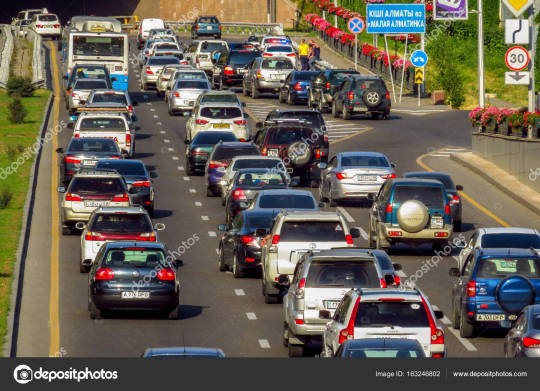
Works Cited:
file:///C:/Users/MattG/Downloads/sustainability-11-04973-v2.pdf
“BAKAD Road Concession.” European Bank for Reconstruction and Development (EBRD), www.ebrd.com/work-with-us/projects/psd/bakad-road-concession.html.
Problems in cities of Bangladesh
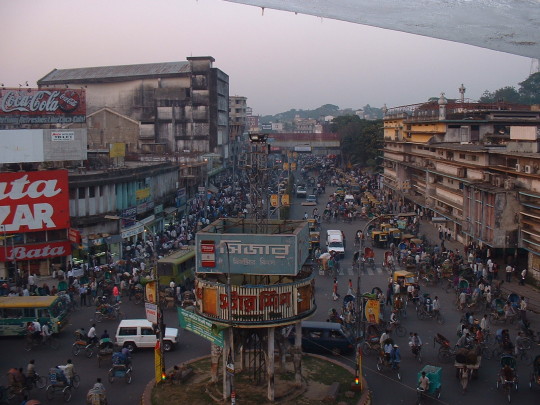
Bangladesh has always had issues with traffic congestion over the past decade. This article focuses on traffic congestion in Chittagong city and the solutions the city came up with to counterattack traffic. Bangladesh is the world’s most densely populated country with 993 people per squire kilometer (Shamsher & Abdullah). With that being said over population is an issue in Bangladesh that causes many problems such as limited resources, pollution, and traffic congestion. Most of the air is polluted caused by the emission gas from the cars/vehicles. Studies show that major cities in Bangladesh such as Chittagong, Dhaka, and Khulna reveal that the average speed of a major road is 15 to 17 kilometer per hour during peak period (Shamsher & Abdullah). Basically, cars in Bangladesh are moving at a speed of 9.3 miles per hour (minimum) and 10.56 miles per hour (maximum). With that being said, that’s pretty slow for the average speed while driving. At that point, I’d just start walking or biking to my destination unless it the destination is far. Because of how bad traffic congestion is becoming in Bangladesh the amount of economic wastage caused by traffic congestion was 79 million US dollars in 1997. However, the amount has changed from 79 million US dollars a year, to 3 billion US dollars a year. In addition to the high costs of traffic congestion, the cities on Bangladesh have lost over 8 million hours of work. With that being said, a poor developing country like Bangladesh cannot afford the economic and environmental loss resulted from this traffic obstruction (Shamsher & Abdullah). A country like Bangladesh can’t afford to spend and use this amount of resources every year because it will cause major cities to lose sustainability for the citizens.
For a smart city to come about, the city must always take care of the people living in it. And to take care of the people, the city must provide for the people. Such as transportation and safety issues. Cities in Bangladesh have very little space for cars to drive through. The narrow roads limits the amount of space a car can move through and one reason why traffic congestion occurs all the time. Chittagong is the second largest city in Bangladesh with a population of 4.1 million in an area of 177 sq. km (Shamsher & Abdullah). Chittagong is located in the southeastern part of Bangladesh where the natural disasters are more common such as storms, cyclones, floods, and landslides. These natural disasters causes traffic congestion throughout the city of Chittagong. In addition, over population causes people to stay still on the roads especially during rush hour causing the area to be overpopulated making it difficult for people to navigate through it. According to Shamsher and Abdullah, people of Bangladesh do not follow traffic rules properly and most of the drivers just do not obey speed limits. With that beings said, when people break the rules it will obviously cause problems, especially when it comes to traffic conditions.
The article came up with 4 solutions for traffic congestion which are: 1. Road space rationing, incentives to use public transport and introduction of e-education and e-hopping and home-based working options will reduce the number of people traveling (Shamsher & Abdullah). I think this solution has some pros and cons. The pros: less car usage, decrease traffic, save resources and money. Cons: people will not be as active, making social life difficult, and the people’s travel life will be limited. 2. The BRT that stands for Bus Route Franchising which is also the country’s first bus route franchise (BRF). This concept is used in Dhaka where buses began a digital ticketing system to reduce the inconvenience for passengers. In addition to implementing a digital ticketing system, adding more bus stops where only buses can stop and pick or drop passenger off as they please. This method can reduce traffic congestion by less car usage and pedestrians walking on or by the street. 3. Increasing and developing the manpower (Traffic police) by increasing the amount of traffic polices, the traffic will be able to move more smoothly. In addition, it would increase the safety for everyone. Another reason to have more traffic police is to decrease the amount of traffic violators allowing less problems to occur during traffic. For example, cutting someone off or driving somewhere you’re not supposed to, the traffic police will prevent that from happening. 4. Road widening because of how narrow the roads are in all the cities in Bangladesh. Because of the narrow roads, cars are unable to move freely making it difficult for traffic to move. Widening the road space would definitely improve the movement of traffic, but I do not think it will be the answer to reducing traffic congestion. The more space and roads that are available, the more people will use it. For example, LA has terrible traffic congestion and the city implemented multiple lanes for people to drive on, but this didn’t help with traffic. 5. Imposing tax on cars and other private transportation, this method consists of charging a high amount of tax on imported cars and other private transports. Tax amount should be increased in order to reduce the amount of private transportation hence traffic congestion (Shamsher & Abdullah). The goal for this method is to make public transportation more available and convenient for the people in the city. By doing so it reduces the amount of private transportation which means less cars on the roads. I think this method would work in poor areas like Bangladesh because of the technology and the limited resources available. In the other hand, I don’t think this method would work in rich areas with available resources because of the advances in technology. I say this because the less resources and technology available, the less options and solutions the city has. In this case, because of the limited resources available, the technology is less advanced, which doesn’t help the city as much as it should.
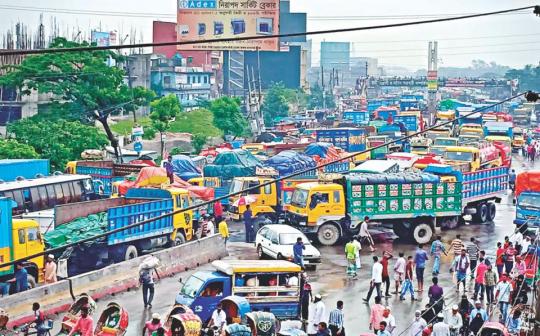
Works Cited:
file:///C:/Users/MattG/Downloads/309-1007-1-PB.pdf
0 notes